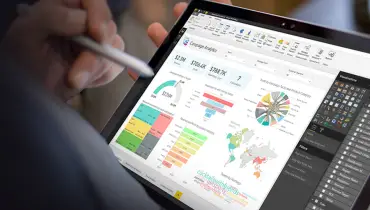Basic Punctuation Rules for Web Writing

If you want to write high quality web content that passes your message across clearly and effectively, then you must use proper punctuation in your writing. Readers cringe at poorly punctuated writing because it is difficult to read and understand.
When you write using correct grammar and punctuation, you’re more likely to be trusted and viewed as an expert, whether you are writing a blog post, social media post, or contributing to an online forum. Proper punctuation demonstrates good writing skills and raises your profile as a writer.
Here are basic web writing rules of punctuation that will help you craft high quality articles and web content that attract, convert, and satisfy readers.
Comma (,)
The comma is a punctuation device that is used to separate structural elements of sentences into more manageable segments. It is primarily used to aid in clarity.
Use the comma to separate independent clauses or parts of a sentence that can stand on their own. This rule applies whenever you use the following seven coordinating conjunctions that can be remembered simply as the FANBOYS of grammar: For, And, Nor, But, Or, Yet, So. For example: "I enjoy traveling, and I love experiencing new cultures."
Also, use a comma after introductory phrases, clauses and words that precede the main clause. Common introductory words include: after, although, as, because, if, since, when, and while. For example, "If you want to be healthy, you should eat a balanced diet every day."
Moreover, separate items in a list with a comma. For example, “We visited France, Britain, and China.” While there is controversy on this usage and some style guides advocate to avoid using a comma to separate the last item in a list of three items—the serial comma, as it is called (or the Harvard or Oxford comma)—in many cases the Oxford comma reduces ambiguity in lists.
General rule of thumb: Use commas to prevent possible misreading or confusion, but do not overuse them.
Semicolon (;)
A semicolon is used to join two or more short sentences into one longer sentence where the thoughts expressed are strongly tied to one another.
While semicolons are important for specific purposes in written English, they may not be particularly well suited for web writing. They don’t always lend themselves to lean, more direct sentence contractions. Don't use semicolons if you notice they are leading to long and complex sentence structures.
Use them when you want to connect independent clauses that indicate a closer relation between thoughts where a period would be too great a separation. For example, you can write: Brevity is short; clarity is sweet; style is pretty.
General rule of thumb: Don't use semicolons too frequently to avoid coming across as pretentious and complicated. Use the more familiar period (.) to break up long sentences into shorter, well-honed independent clauses that don't distract, slow down or alienate your readers.
Quotation marks (“”)
Quotation marks come in pairs. Never forget to close your quotes. They are used primarily to set off and represent exact language (either spoken or written) that has come from somebody else. Quotation marks are also an excellent and practical defense against accidental plagiarism.
Use a comma to introduce a quotation, and always put punctuation inside your quotation marks. For example: Jane said, “I'll get my revenge.”
Capitalize the first letter of a direct quote that makes a complete sentence, but not when the direct sentence is a piece or fragment of the original quote. For example: John shouted, "That's my book." He went on to say that he believed he was "being framed by Mary."
General rule of thumb: Use quotation marks to set off or enclose the exact written or spoken words used by another person.
Hyphen (-)
A hyphen is used to connect or link individual words or parts of words to form compound words that have an entirely new meaning.
So, when hyphens come before a noun, they modify and act as a single idea. For example: State-of-the-art infrustructure, kind-herted person, or mother-in-law drama..
Hyphenation (the use of a hyphen to link words) is in a state of flux and authorities do not always agree on application. But, there are three main cases where you should use them: in compound words, to join prefixes to other words, and to show word breaks.
Moreover, when writing out new, original, or unusual compound nouns, hyphenate those words to avoid confusion. For example: "I decided not to give up again and became a no-quiter."
Also use a hyphen in compound adjectives describing ages and lengths of time. Leaving them out can make the meaning ambiguous. For example, 50-year-old man.
Some established compound adjectives are always hyphenated. So, double-check with a dictionary or refer to the style manual you are following (APA, MLA, Chicago Style Manual, etc.) to confirm if you need to hyphenate a word or not. You can find links to popular grammar and style manuals in our Web Resources for Writers page.
General rule of thumb: Do not hyphenate unless it serves a specific purpose. If a compound word cannot be misread, you do not need to hyphenate it.
Exclamation marks (!)
Exclamation marks are used to show when something is surprising or forceful. They can make a sentence more exciting, emotional, or emphatic, and set the tone of your writing.
You can use an exclamation mark after interjections (words or phrases that are used to exclaim, command or protest like “wow” or “oh”) or to depict strong feelings in writing. For example, “I can’t wait to visit Europe!”
However, avoid using exclamation marks too much, especially in formal pieces. They tend to make the writer seem unprofessional or cheesy, particularly when overused or used for emphasis and the intent does not come out as strongly.
If you use an exclamation mark, don’t put two in the same paragraph or one in the last sentence of a paragraph followed by another in the first sentence of the subsequent paragraph.
General rule of thumb: Avoid exclamation marks unless really necessary. If you use them, limit your use to a maximum of two in a single web page.
Parentheses ( )
Parentheses are used to enclose text that depart from the main subject or interrupt the flow in a piece of writing. They are also used to enclose nonessential material, such as abbreviations and dates.
Always put punctuation on the outside of parentheses. For example:
He likes to shout (like I am doing now), but he is a nice guy.
He likes to shout (like I am doing now). He is a nice guy.
General rule of thumb: Don’t use too many parentheses in your copy to avoid distracting readers from the main message of your text.
Capitalization (CAP)
Use headline-style capitalization, also called title case, for headings, titles, and subtitles in your web copy.
Headline-style capitalization entails capitalizing the first word of all important words (e.g nouns, pronouns, and verbs) in the title and subtitle. But do not capitalize "less important" words in titles and subtitles, such as prepositions, articles, and conjunctions unless these words are the first words in the title. For example: "Which Is the Best Treatment?"
Additionally, capitalize titles that precede the name of the title bearer, but not titles that follow the name of the title bearer as shown in the sentence examples below:
He worked with President Clinton.
He worked with Clinton, the US president.
General rule of thumb: Ensure all capitalizations flow naturally and don’t distract the reader from the message of your text with them.
Numbers (1-0)
As a general rule of thumb, write out numbers one through nine in words and 10 and above in digit form.
Take care of the basics and you will write in a way that piques the interest of your audience and raises your profile as an expert.




















